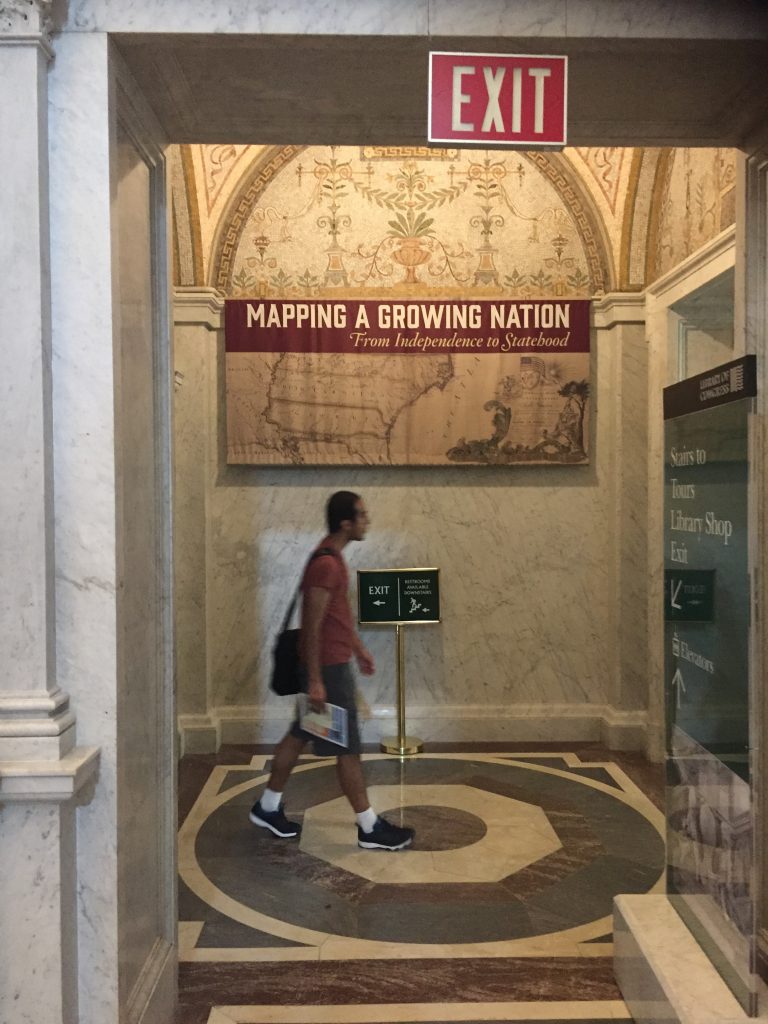
We (Joe Marshall (Head of Special Collections) and Scott Renton (Library Digital Development)) visited Washington DC for the IIIF Conference from 21st-25th May. This was a great opportunity for L&UC, not only to visit the Library of Congress- the mecca of our industry in some ways- but also to come back with a wealth of knowledge which we could use to inform how we operate.
Edinburgh gave two papers- the two of us delivering a talk on Special Collections discovery at the Library and how IIIF could make it all more comprehensible (including the Mahabharata Scroll), and Scott spoke with Terry Brady of Georgetown University showing how IIIF has improved our respective repository workflows.
From a purely practical level, it was great to meet face to face with colleagues from across the world- we have a very real example of a problem solved with Drake from LUNA, which we hope to be able to show very soon. It was also interesting to see how the API specs are developing- the presentation API will be enhanced with AV in version 3, and we can already see some use cases with which to try this out; search and discovery are APIs we’ve done nothing with, but these will help the ability to search within and across items, which is essential to our estate of systems, and 3D, while not having an API of its own, is also being addressed by IIIF, and it was fascinating to see the work that Universal Viewer and Sketchfab (which the DIU use) are doing to accommodate it.
The community groups are growing too, and we hope to increase our involvement with some of the less technical areas- Manuscripts, Museums, and the newly-proposed Archives group in the near future.
Among a wealth of great presentations, we’ve each identified one as our favourite:
Scott: Chifumi Nishioka – Kyoto University, Kiyonori Nagasaki – The University of Tokyo: Visualizing which parts of IIIF images are looked by users
This fascinating talk highlighted IIIF’s ability to work out which parts of an image, when zoomed in, are most popular. Often this is done by installing special tools such as eyetrackers, but the nature of IIIF- where the region is displayed as part of the URL- the same information can be visualised by interrogating Apache access logs. Chifumi and Kiyonori have been able to generate heatmaps of the most interesting regions on an item, and the code can be re-used if the logs can be supplied.
Joe: Kyle Rimkus – University of Illinois at Urbana-Champaign, Christopher J. Prom – University of Illinois at Urbana-Champaign: A Research Interface for Digital Records Using the IIIF Protocol
This talk showed the potential of IIIF in the context of digital preservation, providing large-scale public access to born-digital archive records without having to create exhaustive item-level metadata. The IIIF world is encouraging this kind of blue-sky thinking which is going to challenge many of our traditional professional assumptions and allow us to be more creative with collections projects.
It was a terrific trip, which has filled us with enthusiasm for pushing on with IIIF beyond its already significant place in our set-up.
Joe Marshall & Scott Renton
